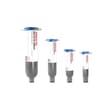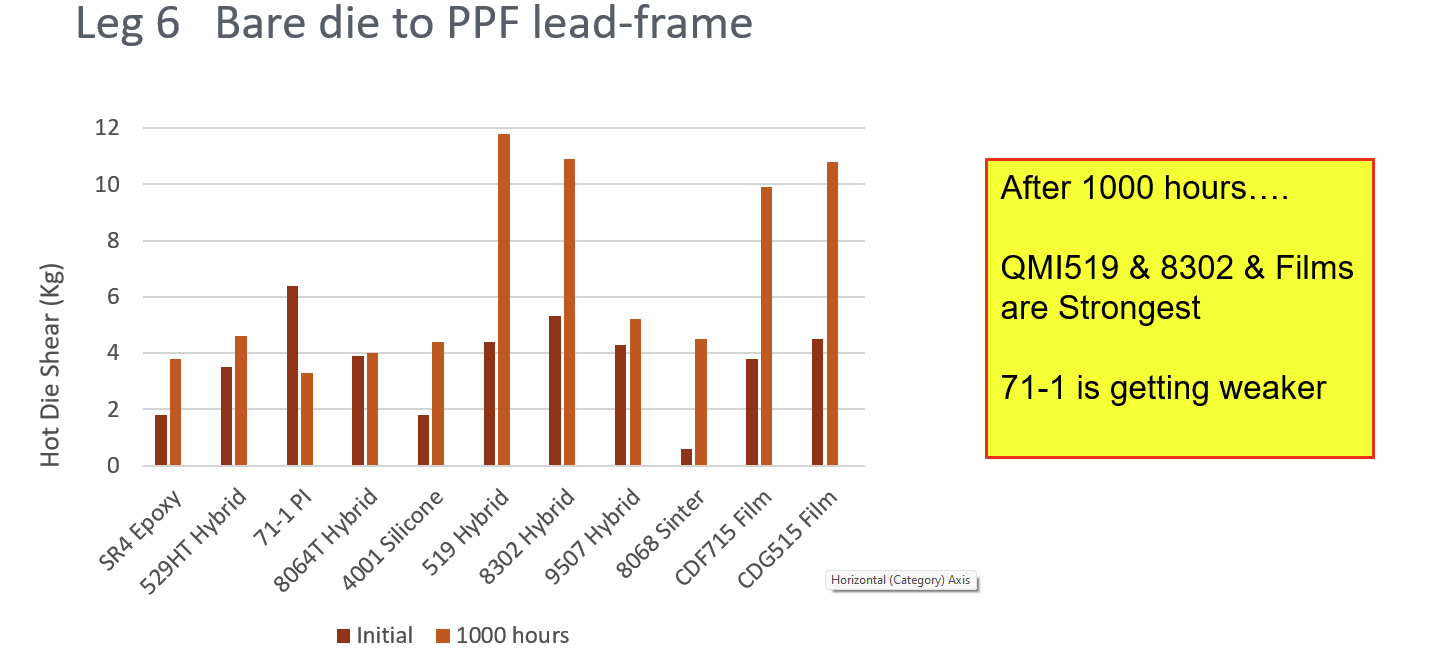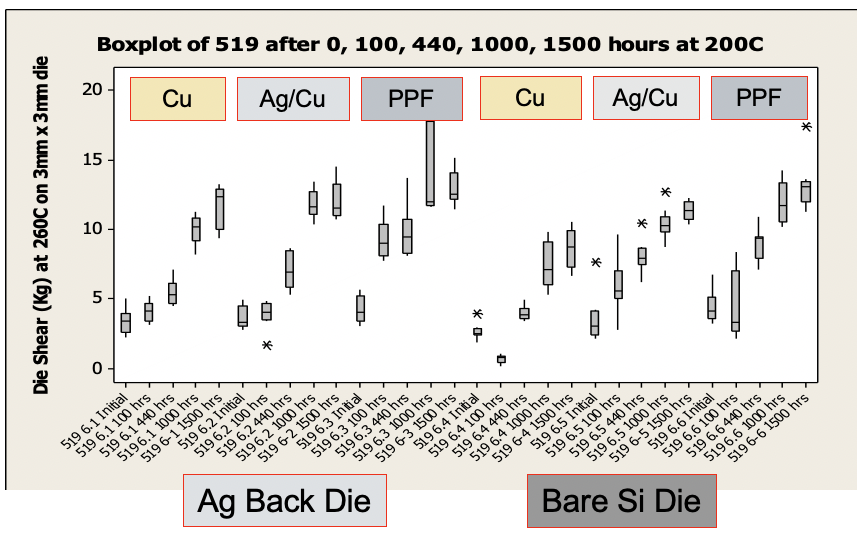LOCTITE ABLESTIK QMI519
- Void free bondline
- Hydrophobic
- Strongest Die attach
Product Description
LOCTITE ABLESTIK QMI519 silver filled conductive adhesive is a proprietary Hybrid BMI/Acrylate resin, recommended for use in bonding integrated circuits and components to metal leadframes. It is is designed to achieve UPHs several orders of magnitude higher than conventional oven cured adhesives. After 1500 hours of testing it is, by far, the strongest die attach paste (almost double of 8302 which comes at the 2nd place). The initial adhesion is in "mid-range" but it increases heavily during aging.
LOCTITE ABLESTIK QMI519 maximum productivity is realized through in-line cure, either on the die bonder using a post diebond heater or on the wirebonder preheater. Studies have also shown improved coplanarity in parts cured on the die bonder. This product and its use may be covered by patent 5,717,034 and by one or more pending patent applications.
LOCTITE ABLESTIK QMI519 is an electrically and thermally conductive, hydrophobic product that achieves void free bondlines and stability at high temperatures. It is typically used for SOIC, SOP, QFP and QFN type packages and on a wide variety of metals and ceramic surfaces, Copper, Silver, Palladium and Alloy 42. It is a great product of choice for PPF leadframes.
SkipCure Process
- ≥10 seconds @ 200°C
Typical Cure
- 15minutes @ 185°C
- 15minutes @ 200 to 220°C
Technical Specifications
| General Properties | |||||||||
| |||||||||
| Specific Gravity Specific Gravity Specific gravity (SG) is the ratio of the density of a substance to the density of a reference substance; equivalently, it is the ratio of the mass of a substance to the mass of a reference substance for the same given volume. For liquids, the reference substance is almost always water (1), while for gases, it is air (1.18) at room temperature. Specific gravity is unitless. | 3.8 | ||||||||
| Physical Properties | |||||||||
| Thixotropic index Thixotropic index Thixotropic Index is a ratio of a material s viscosity at two different speeds in Ambient temperature, generally different by a factor of ten. A thixotropic material s viscosity will decrease as agitation or pressure is increased. It indicates the capability of a material to hold its shape. Mayonnaise is a great example of this. It holds its shape very well, but when a shear stress is applied, the material easily spreads. It helps in choosing a material in accordance to the application, dispense method and viscosity of a material. | 4.2 | ||||||||
| Viscosity Viscosity Viscosity is a measurement of a fluid’s resistance to flow. Viscosity is commonly measured in centiPoise (cP). One cP is defined as the viscosity of water and all other viscosities are derived from this base. MPa is another common unit with a 1:1 conversion to cP. A product like honey would have a much higher viscosity -around 10,000 cPs- compared to water. As a result, honey would flow much slower out of a tipped glass than water would. The viscosity of a material can be decreased with an increase in temperature in order to better suit an application | 9,000 mPa.s | ||||||||
| Chemical Properties | |||||||||
| |||||||||
| Mechanical Properties | |||||||||
| |||||||||
| Thermal Properties | |||||||||
| |||||||||
| Glass Transition Temperature (Tg) Glass Transition Temperature (Tg) The glass transition temperature for organic adhesives is a temperature region where the polymers change from glassy and brittle to soft and rubbery. Increasing the temperature further continues the softening process as the viscosity drops too. Temperatures between the glass transition temperature and below the decomposition point of the adhesive are the best region for bonding. The glass-transition temperature Tg of a material characterizes the range of temperatures over which this glass transition occurs. | 75 °C | ||||||||
| Thermal Conductivity Thermal Conductivity Thermal conductivity describes the ability of a material to conduct heat. It is required by power packages in order to dissipate heat and maintain stable electrical performance. Thermal conductivity units are [W/(m K)] in the SI system and [Btu/(hr ft °F)] in the Imperial system. | 3.8 W/m.K | ||||||||





